Tennis, a sport steeped in history and tradition, boasts a lineage of exceptional players who have left an indelible mark on the game. From the elegance and grace of Roger Federer to the relentless power of Rafael Nadal, each generation has witnessed the rise and dominance of legendary players.
Defining the greatest men’s tennis players of all time is a challenging task, as different eras, surfaces, and playing styles make direct comparisons difficult. However, a select few individuals have consistently dominated the sport, achieving unparalleled success and leaving a legacy that transcends generations.
This article will delve into the lives and careers of these legendary figures, exploring their achievements, rivalries, and lasting impact on the game. From Novak Djokovic’s modern dominance to Rod Laver’s legacy as a true legend of the sport, we will take a closer look at the greatest men’s tennis players of all time.
Overview of the Greatest Men’s Tennis Players of All Time
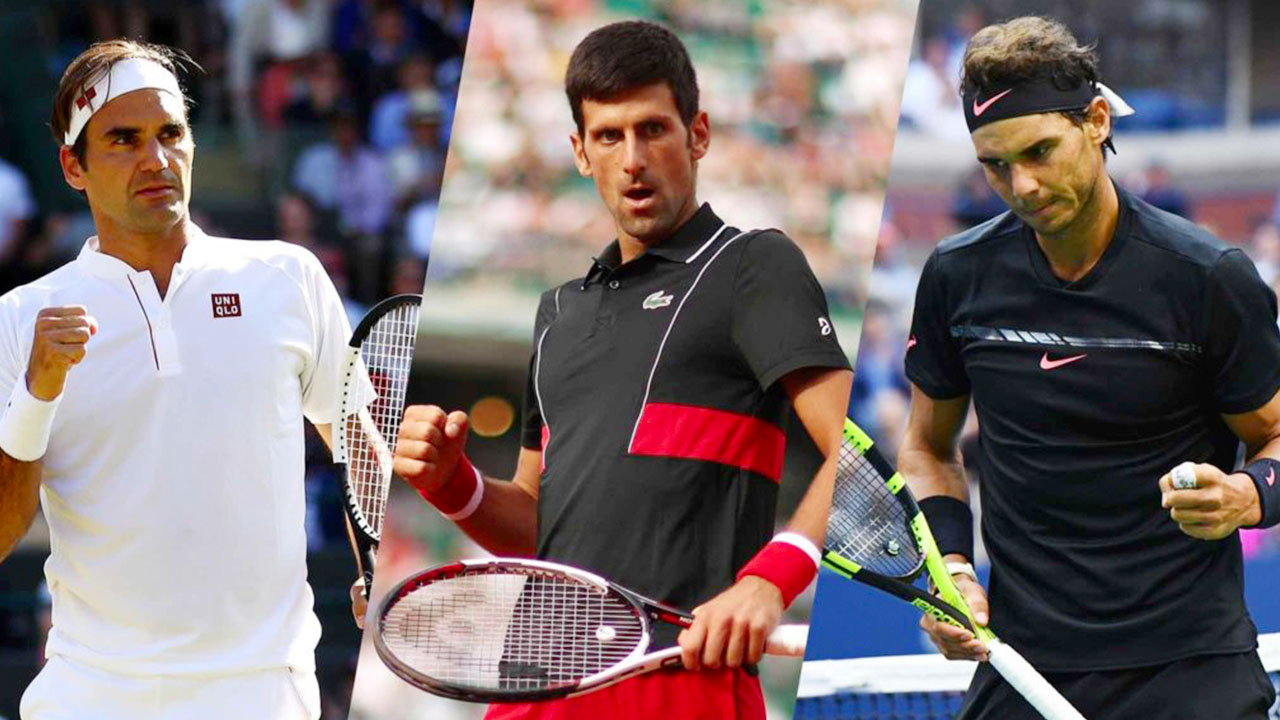
Before we dive into the individual players, let’s take a moment to appreciate the remarkable numbers and accomplishments of the greatest men’s tennis players in history. Here is a table highlighting some key statistics for the top 10 male players with the most Grand Slam titles:
| Player | Career Titles | Career Prize Money |
| Novak Djokovic | 98 (24 Grand Slams) | $181,599,018 |
| Rafael Nadal | 92 (22 Grand Slams) | $134,659,704 |
| Roger Federer | 103 (20 Grand Slams) | $130,594,339 |
| Rod Laver | 200 (11 Grand Slams) | $1,565,413 |
| Pete Sampras | 64 (14 Grand Slam Titles) | $43,280,489 |
| Bjorn Borg | 101 (11 Grand Slam Titles) | $3,655,751 |
| Ivan Lendl | 144 (8 Grand Slam Titles) | $21,262,417 |
| Jimmy Connors | 147 (8 Grand Slam Titles) | $8,641,040 |
| Andre Agassi | 61 (8 Grand Slam Titles) | $31,152,975 |
| John McEnroe | 105 (7 Grand Slam Titles) | $12,547,797 |
As seen in the table, Novak Djokovic currently holds the record for most Grand Slam titles in men’s tennis history at 24. However, Rafael Nadal is not far behind with 22 titles, and Roger Federer closely follows with 20 titles.
It’s also worth noting that Rod Laver has over 200 career titles, but this includes both amateur and professional events. He officially has 11 Grand Slam titles and 9 Pro Slam titles, making him a true legend of the sport.
Now let’s take a closer look at each individual player and their remarkable achievements.
Novak Djokovic (24 Grand Slam Titles)
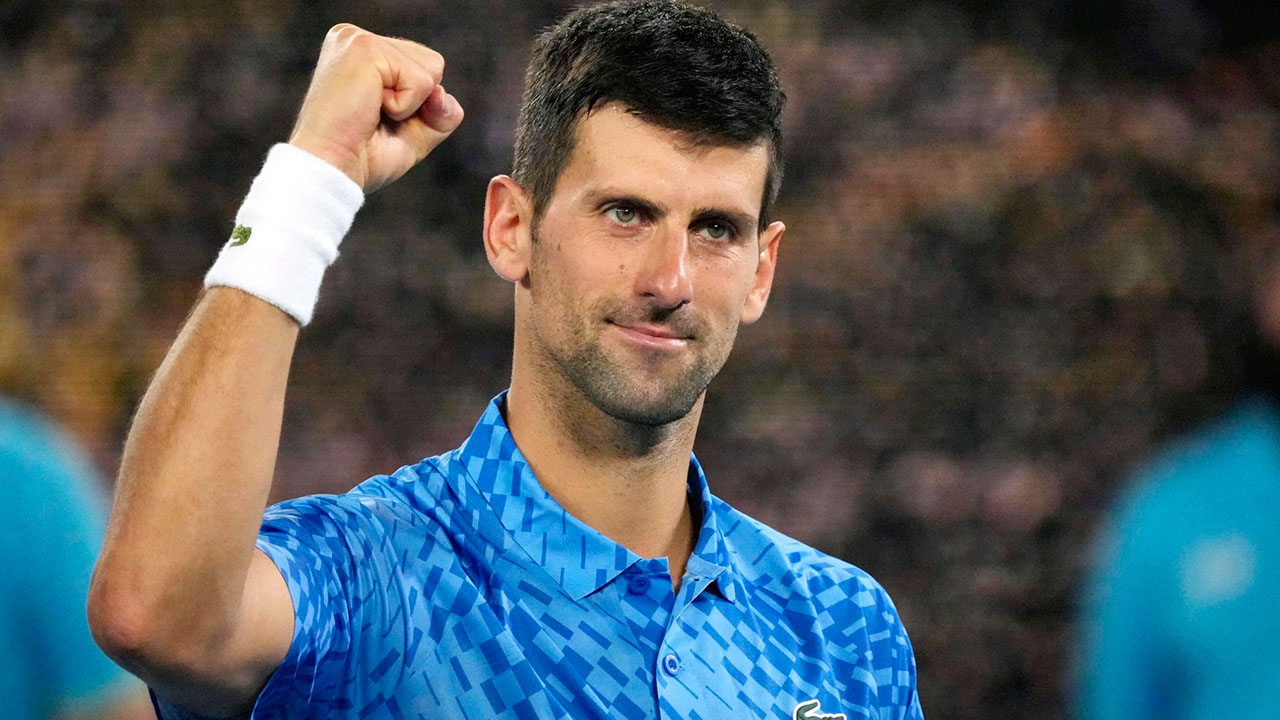
Novak Djokovic is a Serbian professional tennis player who has dominated the sport in recent years. He was born in Belgrade, Serbia in 1987 and began playing tennis at a young age. Djokovic showed remarkable talent and dedication early on in his career and quickly rose through the ranks.
Early Life and Career Beginnings
Djokovic’s tennis journey began when he was four years old, hitting balls against a wall while watching his parents play. His father, Srdjan, was a professional skier, and his mother, Dijana, was a former professional tennis player. The combination of athletic genes and a love for the sport made Djokovic a natural on the court.
In his junior career, Djokovic won several prestigious titles, including the Australian Open junior tournament in 2004 and a runner-up finish at Wimbledon in 2003. He turned pro in 2003 and quickly made a name for himself with impressive performances on the ATP Tour.
Dominance in the Modern Era
Djokovic’s rise to prominence coincided with the golden age of men’s tennis, an era defined by the fierce rivalry between Rafael Nadal and Roger Federer. However, Djokovic soon emerged as a force to be reckoned with, claiming his first Grand Slam title at the 2008 Australian Open.
Since then, Djokovic has consistently been at the top of the game, winning multiple Grand Slam titles each year. His dominance on all surfaces, including hard courts, clay courts, and grass courts, has solidified his place as one of the greatest men’s tennis players of all time.
Rivalries with Nadal and Federer
As mentioned earlier, Djokovic’s career has largely overlapped with that of Rafael Nadal and Roger Federer, two of the greatest players in tennis history. Their rivalry has been referred to as the “Big Three” and has captivated fans for over a decade.
Djokovic has had a particularly intense rivalry with Nadal, as they have faced each other 58 times on the court, the most head-to-head matchups in men’s tennis history. They have also played in nine Grand Slam finals, with Djokovic coming out on top six times.
Rafael Nadal (22 Grand Slam Titles)
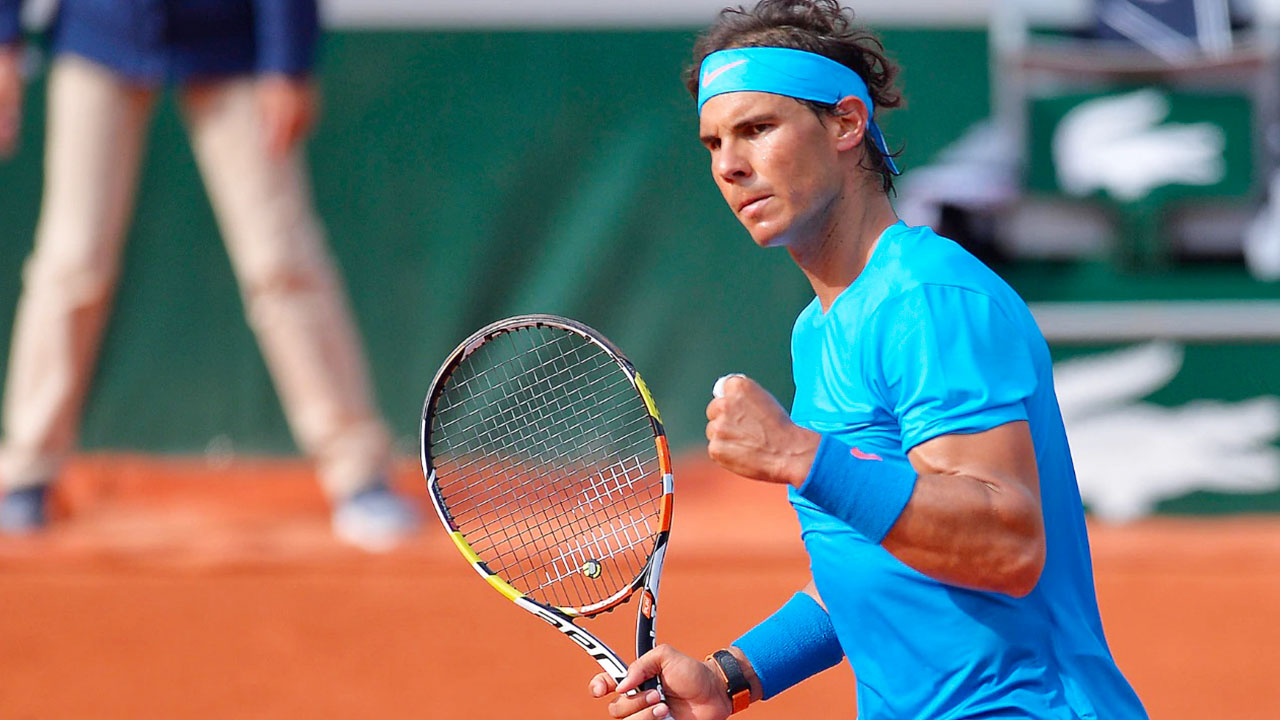
Rafael Nadal is a Spanish professional tennis player who has established himself as one of the greatest clay court players in history. He was born in Mallorca, Spain in 1986 and began playing tennis at the age of three.
Rise to Prominence on Clay Courts
Nadal made his professional debut in 2001 and quickly gained recognition for his exceptional skill on clay courts. In 2005, he won his first Grand Slam title at the French Open, becoming the youngest male player in the Open Era to win a Grand Slam singles title.
Since then, Nadal has dominated the clay court season, winning a record-breaking 13 French Open titles and establishing himself as the “King of Clay.” His physicality and relentless style of play make him a formidable opponent on any surface.
Battles with Djokovic and Federer
Similar to Djokovic, Nadal has had a long-standing rivalry with both Novak Djokovic and Roger Federer. These three players have combined to win an astonishing 59 Grand Slam titles, with Nadal holding the record for most French Open titles and Djokovic holding the record for most Australian Open titles.
Despite their fierce competition, there is also a mutual respect and admiration between these players. In an interview, Nadal once said, “The respect we have for each other is something really special.” This camaraderie and sportsmanship add another layer of greatness to these players’ legacies.
Physicality and Mental Toughness
One of the key aspects that sets Nadal apart from other players is his incredible physicality and mental toughness on the court. He is known for his relentless style of play, often chasing down every ball and wearing down opponents with his powerful shots.
Nadal’s mental toughness is also highly revered, as he has been able to bounce back from injuries and setbacks throughout his career. This resilience and ability to stay composed under pressure have contributed to his numerous Grand Slam titles and cemented his place as one of the greatest men’s tennis players of all time.
Roger Federer (20 Grand Slam Titles)
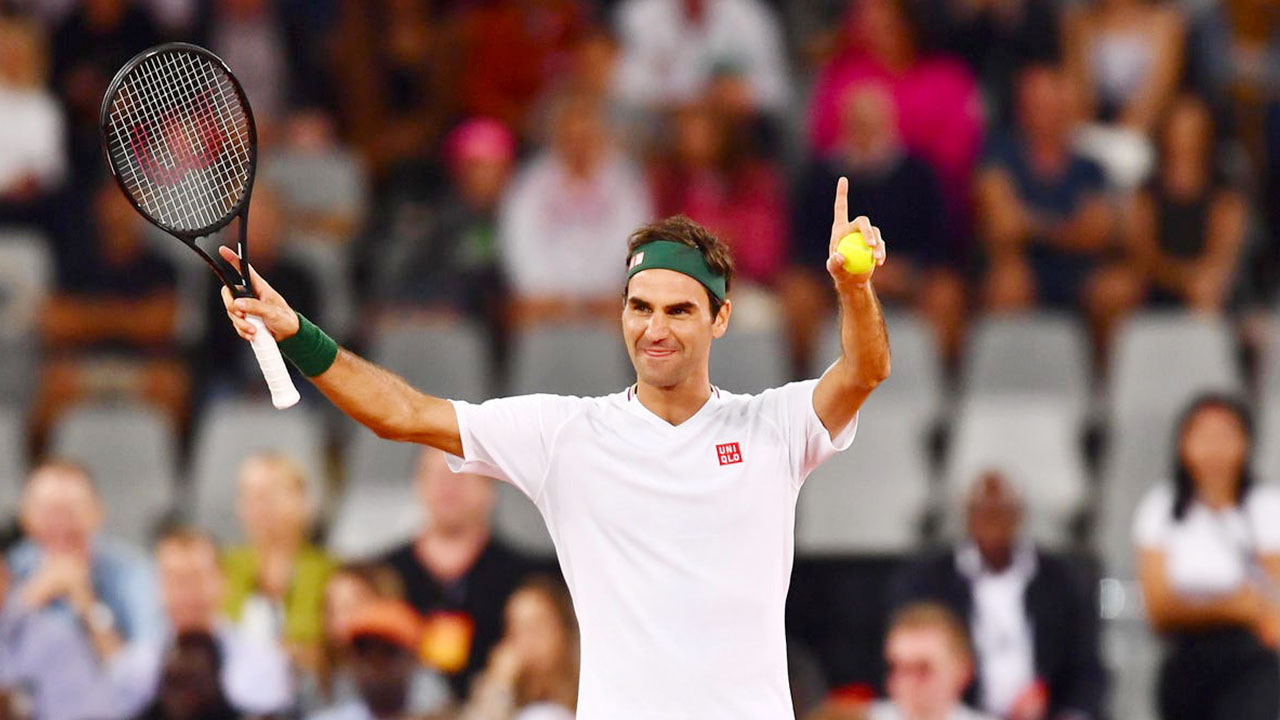
Roger Federer is a Swiss professional tennis player who is widely regarded as one of the greatest male players in history. He was born in Basel, Switzerland in 1981 and began playing tennis at the age of eight.
Artistry and Grace on the Court
Federer is known for his elegant style of play, which has earned him the nickname “The Maestro.” His effortless movement on the court and graceful shot-making abilities have captivated fans for over two decades.
In addition to his technical skill, Federer is also known for his sportsmanship and class both on and off the court. He is often seen interacting with fans and conducting himself with grace and humility, making him a fan favorite around the world.
Longevity and Consistency
One of Federer’s most remarkable achievements is his longevity in the sport. At the age of 40, he is still competing at the highest level and has won Grand Slam titles in three different decades. This consistency and ability to adapt to changing playing conditions make him a true champion.
Federer’s record of 20 Grand Slam titles stood unbroken for many years until Djokovic and Nadal surpassed it in recent years. However, his legacy as one of the greatest tennis players of all time remains intact, and he continues to inspire the next generation of players.
Impact on the Next Generation of Players
Federer’s impact goes beyond his exceptional skills on the court. He has been a role model for many young players, and his success has inspired countless children to pick up a tennis racket. Federer’s charitable efforts off the court, such as his Roger Federer Foundation, have also helped provide opportunities for underprivileged children around the world.
Rod Laver (11 Grand Slam Titles, 9 Pro Slam Titles)
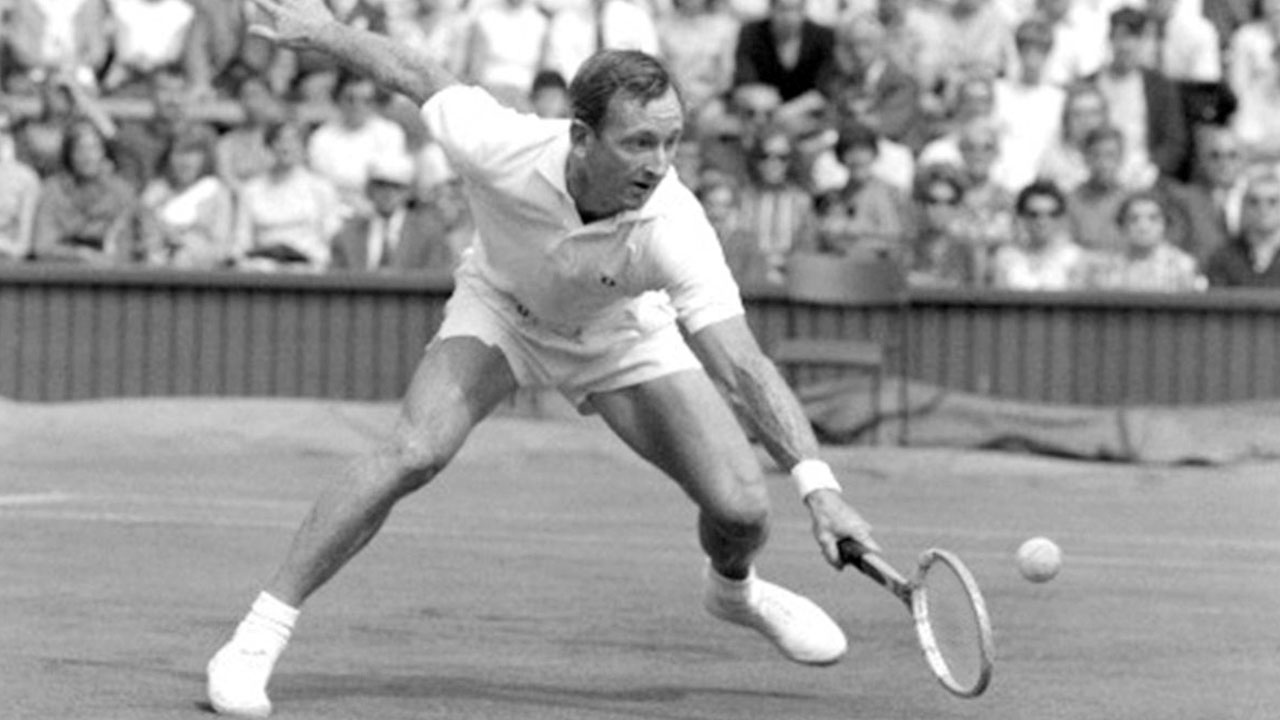
Rod Laver is an Australian former professional tennis player who is widely regarded as one of the greatest players in history. Born in 1938, Laver had a career that spanned both the amateur and professional eras of tennis.
Achievements in Both Amateur and Professional Eras
Laver’s career began in the late 1950s, where he quickly established himself as a top player in the amateur circuit. He won his first Grand Slam title at the 1960 Australian Championships and went on to achieve the Calendar Year Grand Slam in 1962, winning all four major titles in the same year.
When the Open Era began in 1968, Laver turned professional and continued his dominance on the court. He won multiple professional Grand Slam titles, including the Grand Slam in the same year, which was renamed the “Grand Slam” in honor of his achievement.
Calendar Year Grand Slams
Laver achieved the remarkable feat of winning all four Grand Slam titles in a single year twice, once in the amateur era and once in the professional era. This accomplishment is known as the Calendar Year Grand Slam and has only been achieved by two other male players, Don Budge and Novak Djokovic.
Laver’s consistency and dominance across different eras and playing conditions solidify his place as one of the all-time greats of men’s tennis.
Legacy as a True Legend of the Sport
In addition to his accomplishments on the court, Laver’s legacy also includes his impact on the sport. He helped pave the way for professional tennis and was instrumental in the creation of the Open Era. Laver’s name is also synonymous with the Australian Open, as the main stadium is named after him.
Pete Sampras (14 Grand Slam Titles)
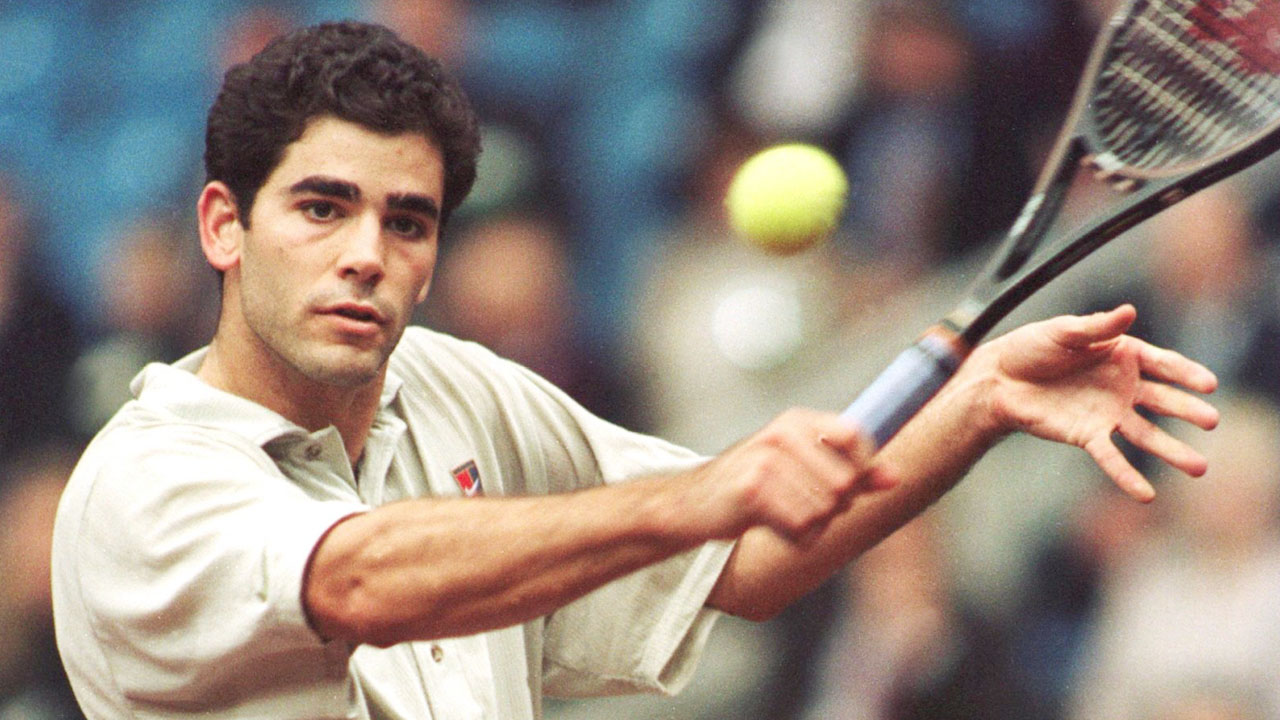
Pete Sampras is an American former professional tennis player who dominated the sport in the 1990s. He was born in Washington D.C. in 1971 and began playing tennis at the age of three.
Dominance in the 1990s
Sampras’ career took off in the early 1990s when he won his first Grand Slam title at the US Open in 1990. He went on to achieve a record-breaking 14 Grand Slam titles, including seven Wimbledon titles and five US Open titles.
His rivalry with fellow American Andre Agassi was one of the most iconic battles of the decade, as they faced each other numerous times in Grand Slam finals. Sampras’ dominance during this era solidifies his place as one of the greatest men’s tennis players of all time.
Serve-and-Volley Style of Play
One of the aspects that set Sampras apart from his competitors was his aggressive serve-and-volley style of play. He had a powerful serve and would often rush to the net to finish points quickly, making it difficult for opponents to keep up with his pace.
Sampras’ style of play was not only effective but also entertaining for fans. He brought excitement to the sport and inspired future generations of players to incorporate elements of his game into their own.
Influence on American Tennis
Sampras’ success on the court had a significant impact on American tennis. He helped reinvigorate the sport in the United States and sparked renewed interest in the game. Many young players saw Sampras as a role model and were inspired by his accomplishments.
Bjorn Borg (11 Grand Slam Titles)
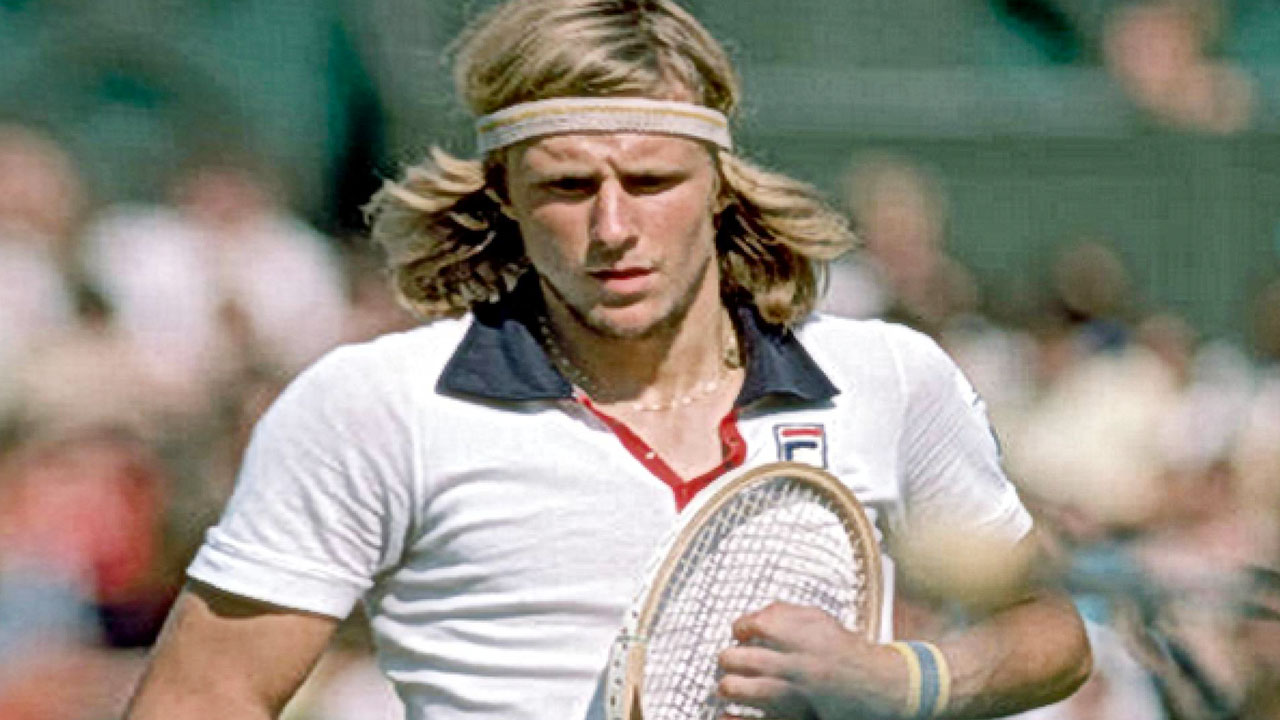
Bjorn Borg is a Swedish former professional tennis player who dominated the sport in the 1970s and early 1980s. He was born in Stockholm, Sweden in 1956 and began playing tennis at the age of nine.
Success on Both Clay and Grass Courts
Borg’s career was marked by his success on both clay and grass courts, making him one of the most versatile players of his time. He won six French Open titles and five Wimbledon titles, showcasing his skill on two very different surfaces.
Borg’s ability to adapt to different playing conditions and dominate on both clay and grass solidify his place as one of the greatest men’s tennis players of all time.
Mental Toughness and Stoic Demeanor
One of Borg’s defining characteristics on the court was his stoic demeanor and mental toughness. He rarely showed emotion during matches and remained calm under pressure, earning him the nickname “Ice Man.”
This mental strength helped him win some of the most intense and memorable matches in tennis history, including the famous “fire and ice” Wimbledon final against John McEnroe in 1980.
Early Retirement and Impacton the Sport
Despite his incredible success at a young age, Borg shocked the tennis world when he announced his retirement in 1983 at the age of 26. His decision to step away from the sport left many fans and fellow players stunned, as Borg was at the peak of his career.
Borg’s early retirement had a lasting impact on the sport, as it left many wondering what more he could have achieved if he had continued playing. His departure also highlighted the intense pressure and scrutiny that top athletes face, both on and off the court.
Ivan Lendl (8 Grand Slam Titles)
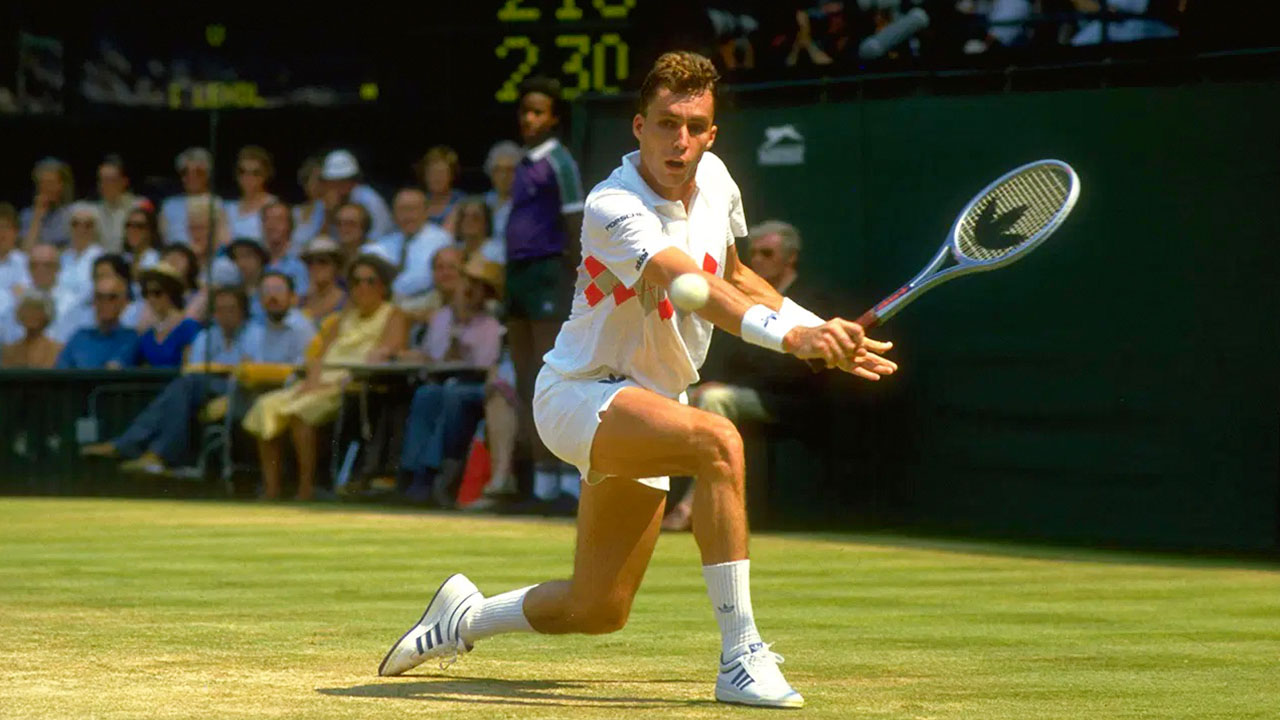
Ivan Lendl is a former professional tennis player from Czechoslovakia who was known for his powerful baseline game and fierce competitiveness. Born in 1960, Lendl rose to prominence in the 1980s and became one of the dominant forces in men’s tennis.
Transition from Clay to Hard Courts
Lendl’s game was built around his strong baseline play and powerful groundstrokes. He excelled on hard courts, where his consistent and aggressive style of play allowed him to dictate points and wear down opponents.
Lendl’s ability to transition from clay courts, where he initially struggled, to hard courts showcased his versatility and determination to improve his game. This adaptability helped him achieve success on multiple surfaces and solidify his place among the greats of the sport.
Rivalries with McEnroe and Connors
During his career, Lendl had intense rivalries with other top players of his era, most notably John McEnroe and Jimmy Connors. These rivalries produced some of the most memorable matches in tennis history, as each player brought their unique strengths and playing styles to the court.
Lendl’s battles with McEnroe, known for his serve-and-volley game, and Connors, known for his aggressive baseline play, tested his skills and mental toughness. Despite facing tough competition, Lendl consistently rose to the challenge and emerged as a formidable opponent.
Coaching Career After Retirement
After retiring from professional tennis, Lendl transitioned into coaching and worked with several top players, including Andy Murray. His coaching expertise and strategic insights helped players refine their games and achieve success on the ATP tour.
Lendl’s impact as a coach further solidified his reputation as a tennis legend, as he continued to contribute to the sport even after his playing days were over.
Jimmy Connors (8 Grand Slam Titles)
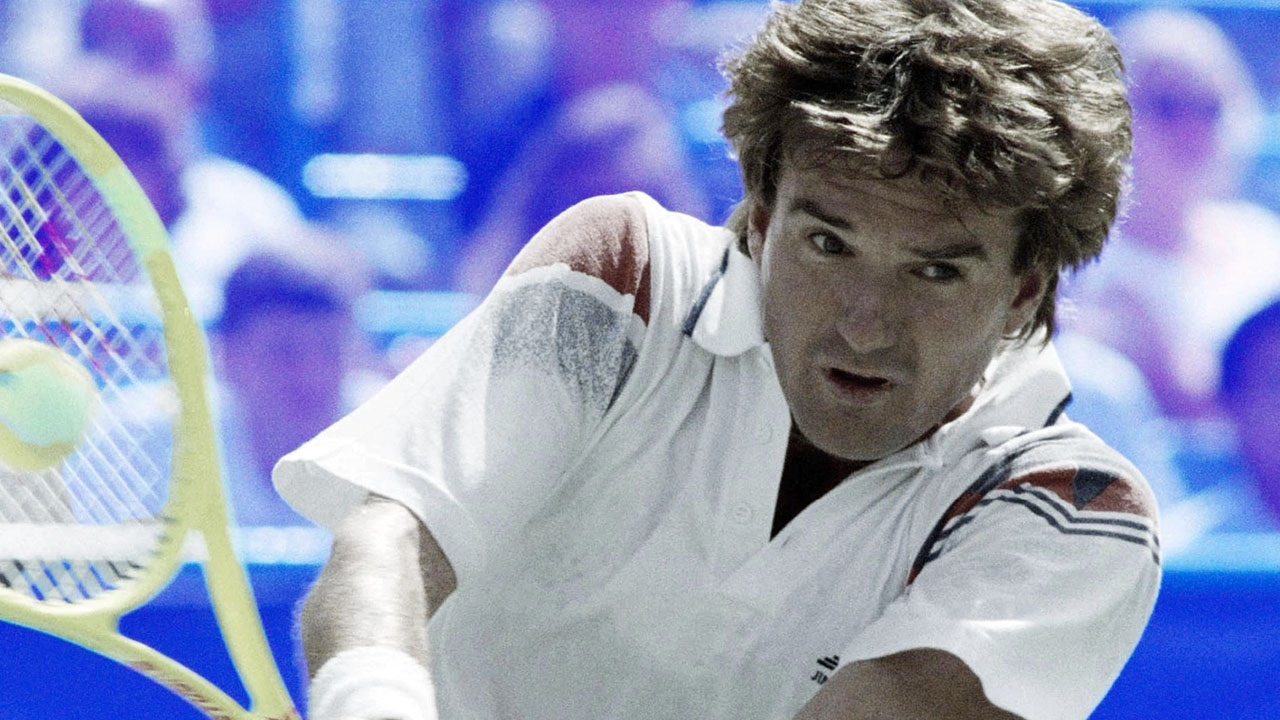
Jimmy Connors is an American former professional tennis player who was known for his aggressive playing style and fiery personality on the court. Born in 1952, Connors rose to fame in the 1970s and became one of the most successful players of his generation.
Aggressive Playing Style
Connors’ playing style was characterized by his powerful groundstrokes, relentless intensity, and never-say-die attitude. He was known for his aggressive baseline game and ability to dictate points with his offensive shot-making.
Connors’ competitive spirit and fighting mentality endeared him to fans around the world, as he often displayed a never-give-up attitude on the court. His tenacity and willingness to battle for every point made him a formidable opponent for any player.
Longevity in the Sport
One of Connors’ most impressive feats was his longevity in the sport. He competed professionally for over two decades, well into his late 30s, and continued to challenge younger opponents with his skill and experience.
Connors’ ability to maintain a high level of play for such a long period is a testament to his dedication to the sport and his passion for competition. He inspired generations of players with his work ethic and commitment to excellence.
Off-Court Controversies
Despite his success on the court, Connors was no stranger to off-court controversies. He often clashed with tennis officials, sponsors, and fellow players, which sometimes overshadowed his accomplishments.
Connors’ brash personality and outspoken nature made him a polarizing figure in the tennis world, as he was unafraid to speak his mind and challenge the status quo. While his behavior may have ruffled feathers at times, it also added an element of drama and excitement to the sport.
Andre Agassi (8 Grand Slam Titles)
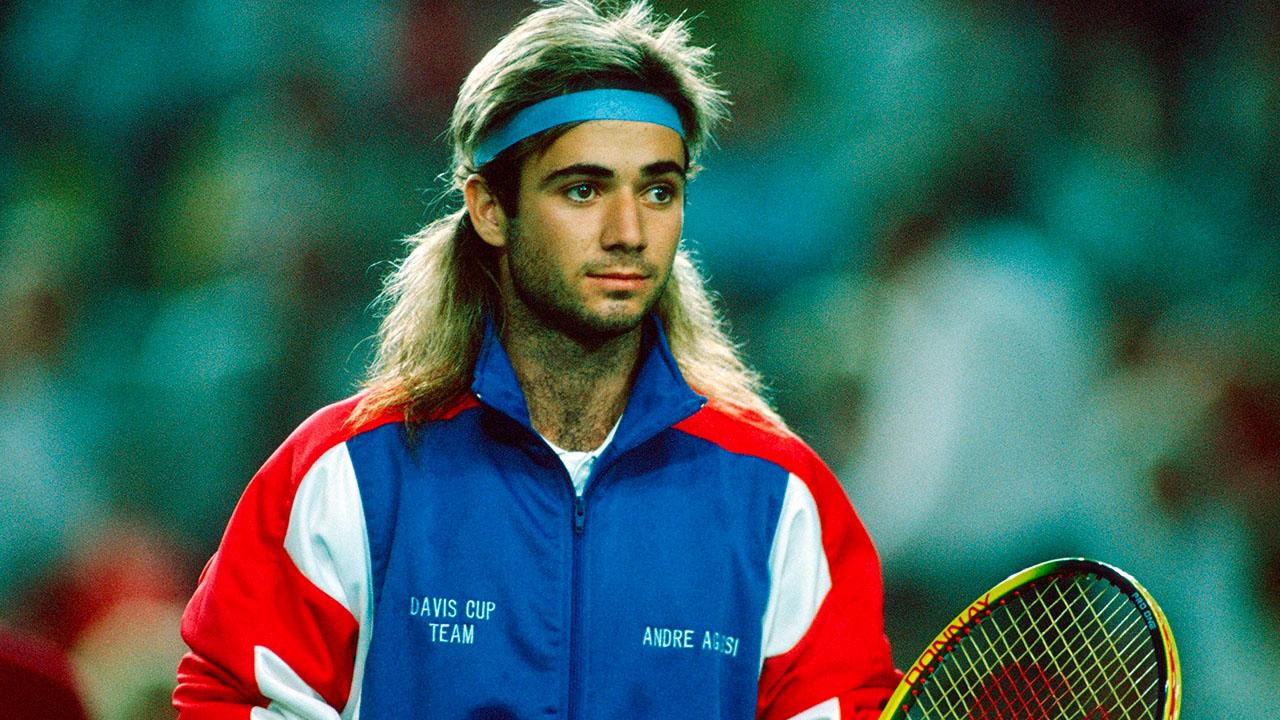
Andre Agassi is an American former professional tennis player who underwent a remarkable transformation during his career, both on and off the court. Born in 1970, Agassi was known for his flamboyant style of play and colorful personality.
Transformation from Rebel to Champion
Agassi’s early years on the tour were marked by rebellious behavior, unconventional fashion choices, and a rocky relationship with the sport. However, he underwent a significant transformation in the 1990s, both in his personal life and his approach to tennis.
Agassi rededicated himself to the sport, revamped his training regimen, and embraced a more disciplined lifestyle. This transformation not only improved his performance on the court but also endeared him to fans who admired his resilience and determination.
All-Around Skill Set
One of Agassi’s greatest strengths as a player was his all-around skill set. He possessed a powerful baseline game, exceptional return of serve, and the ability to hit winners from anywhere on the court.
Agassi’s versatility and shot-making ability allowed him to compete against a wide range of opponents and excel on different surfaces. He won all four Grand Slam titles during his career, showcasing his adaptability and talent as a complete player.
Philanthropic Efforts Off the Court
In addition to his success on the court, Agassi was also known for his philanthropic efforts off the court. He founded the Andre Agassi Foundation for Education, which aims to provide educational opportunities for underprivileged children in the United States.
Agassi’s commitment to giving back to his community and making a positive impact on society has earned him widespread respect and admiration. His charitable work continues to benefit countless children and families, leaving a lasting legacy beyond his tennis achievements.
John McEnroe (7 Grand Slam Titles)
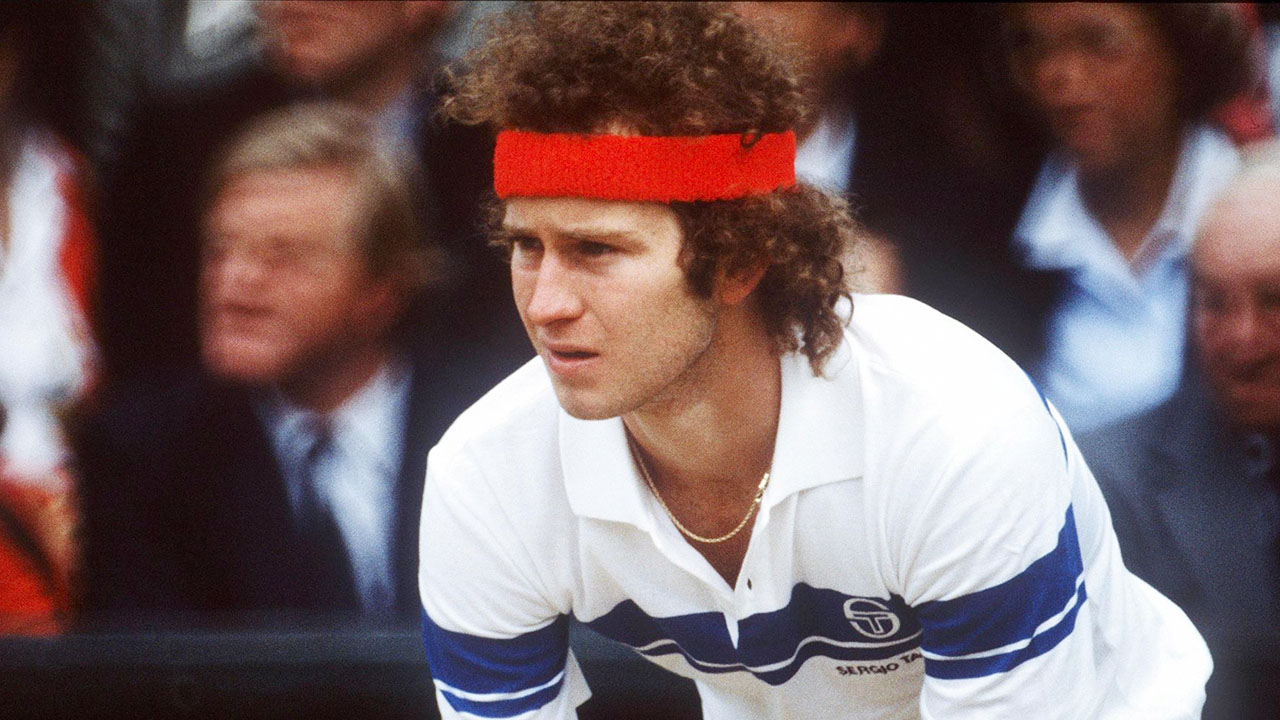
John McEnroe is an American former professional tennis player who was known for his brash personality, on-court antics, and exceptional talent. Born in 1959, McEnroe rose to fame in the 1970s and became one of the most iconic figures in the sport.
Brash Personality and On-Court Antics
McEnroe’s fiery temperament and confrontational style of play set him apart from his peers. He was known for his outbursts, arguments with umpires, and colorful language on the court, which often landed him in hot water with tennis authorities.
Despite his controversial behavior, McEnroe’s passion for the game and unwavering commitment to excellence were evident in his performances. He pushed the boundaries of traditional tennis etiquette and brought a new level of intensity to the sport.
Serve-and-Volley Game Style
One of McEnroe’s signature playing styles was his serve-and-volley game, where he would serve aggressively and follow it up with a quick rush to the net. His exceptional touch at the net and precise volleys made him a formidable opponent on fast surfaces like grass.
McEnroe’s attacking style of play put pressure on his opponents and forced them to come up with creative solutions to counter his aggressive tactics. His serve-and-volley game remains a classic example of effective net play in men’s tennis.
Commentary Career Post-Retirement
After retiring from professional tennis, McEnroe transitioned into a successful career as a tennis commentator and analyst. His insightful commentary, sharp wit, and candid opinions have made him a popular figure in the broadcasting world.
McEnroe’s unique perspective as a former player adds depth and authenticity to his analysis, as he provides viewers with insider knowledge and expert insights into the game. His commentary career has allowed him to stay connected to the sport and continue to contribute to its growth and popularity.
Notes
As we reflect on the careers and achievements of these legendary men’s tennis players, it becomes clear that each one has left an indelible mark on the sport. Their dedication, passion, and talent have inspired generations of players and fans alike, shaping the landscape of tennis for years to come.
Impact of Technology on Modern Tennis
The evolution of technology in tennis, from advanced racquets to data analytics, has revolutionized the way the game is played and coached. Players now have access to cutting-edge equipment and training methods that help enhance their performance and optimize their skills on the court.
Evolution of Playing Styles Over the Years
The playing styles of men’s tennis players have evolved significantly over the years, influenced by changes in equipment, court surfaces, and training techniques. From the serve-and-volley game of past champions to the baseline power of modern players, the sport continues to adapt and innovate.
Importance of Mental Strength in High-Pressure Situations
One common thread among the greatest men’s tennis players of all time is their mental toughness and ability to perform under pressure. The mental aspect of the game is just as crucial as physical skills, as players must navigate intense matches, overcome setbacks, and stay focused amidst distractions.
Mistakes to Avoid
While aspiring tennis players can learn valuable lessons from studying the careers of the greatest players in history, it’s also essential to be mindful of common pitfalls and mistakes to avoid on the journey to success.
Underestimating the Mental Aspect of the Game
One of the biggest mistakes players can make is underestimating the importance of mental strength in tennis. Developing resilience, focus, and a positive mindset is key to overcoming challenges and performing at a high level consistently.
Neglecting Physical Conditioning and Injury Prevention
Physical fitness and conditioning are critical components of success in tennis, as the sport requires agility, endurance, and strength. Neglecting proper training and injury prevention strategies can hinder a player’s performance and longevity on the court.
Focusing Solely on Technique Without Strategy
While mastering technical skills is essential in tennis, it’s equally important to develop strategic thinking and tactical awareness. Understanding game situations, opponents’ tendencies, and effective game plans can give players a competitive edge and lead to better outcomes on the court.
Frequently Asked Questions
As fans and enthusiasts of men’s tennis seek to understand the legacies and achievements of the greatest players of all time, several common questions arise that shed light on the intricacies of the sport’s history and evolution.
Who has the most Grand Slam titles in men’s tennis history?
As of the current writing, Novak Djokovic holds the record for the most Grand Slam titles in men’s tennis history, with 24 major championships to his name. Djokovic’s remarkable success on the court has solidified his place among the all-time greats of the sport.
How do you compare players from different eras in tennis?
Comparing players from different eras in tennis is a challenging task due to changes in equipment, playing conditions, and training methods over time. While statistical data and achievements provide valuable insights, subjective factors such as playing style, competition level, and impact on the sport also play a role in evaluating players’ legacies.
What criteria are used to determine the greatest tennis players of all time?
When determining the greatest tennis players of all time, various criteria are considered, including Grand Slam titles, overall tournament victories, head-to-head records against top opponents, consistency across different surfaces, longevity in the sport, and impact on the game’s development and popularity. Each player’s unique contributions and accomplishments shape their legacy in the annals of tennis history.
Conclusion
In conclusion, the greatest men’s tennis players of all time have captivated audiences, inspired generations, and shaped the sport in profound ways. From the dominance of Novak Djokovic to the artistry of Roger Federer, each player has left an enduring legacy that transcends the boundaries of the tennis court.
As we celebrate their achievements and contributions to the sport, we honor the dedication, passion, and talent that define these legends of men’s tennis. Their stories serve as a source of inspiration for aspiring players, fans, and tennis enthusiasts worldwide, reminding us of the timeless allure and magic of the game.



